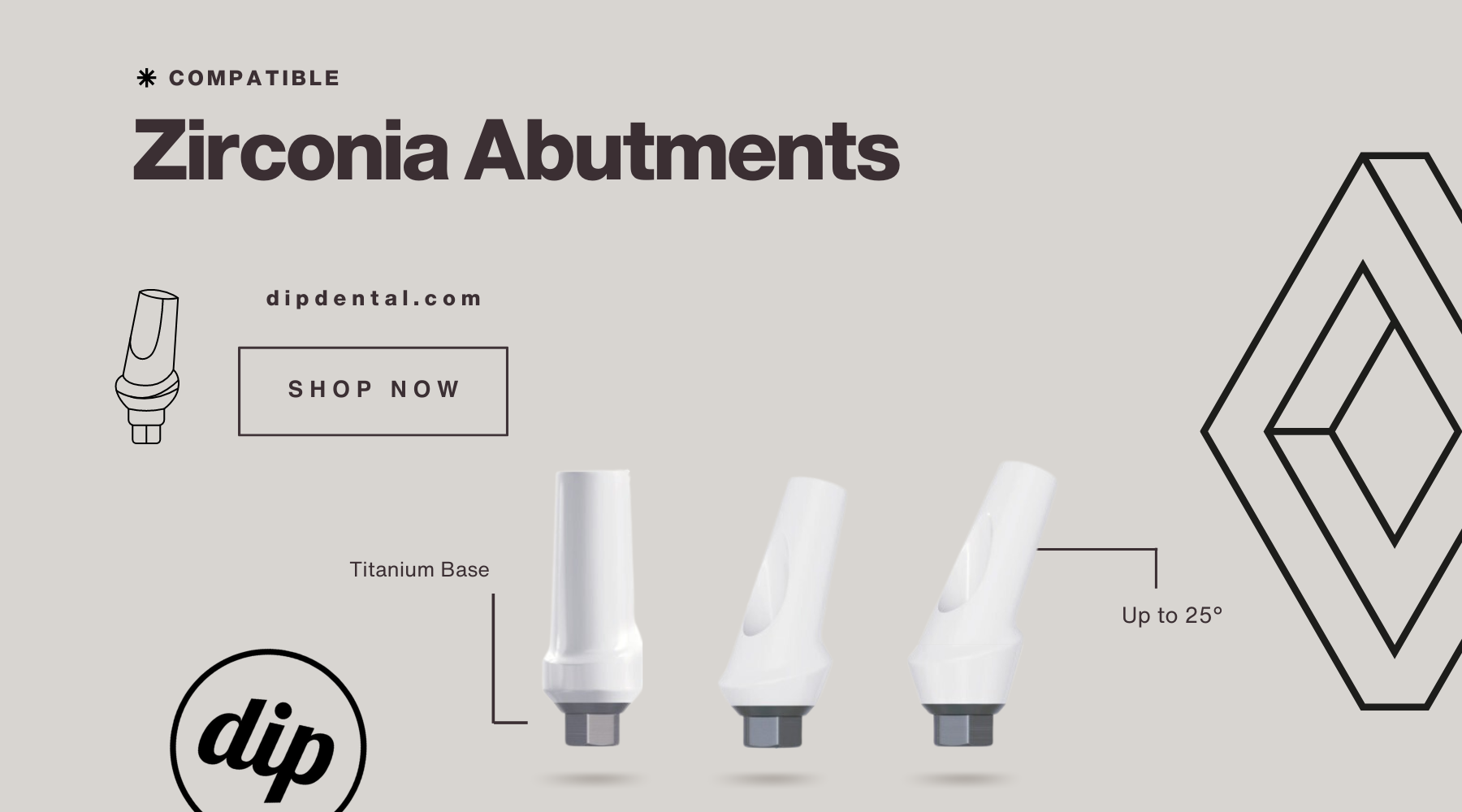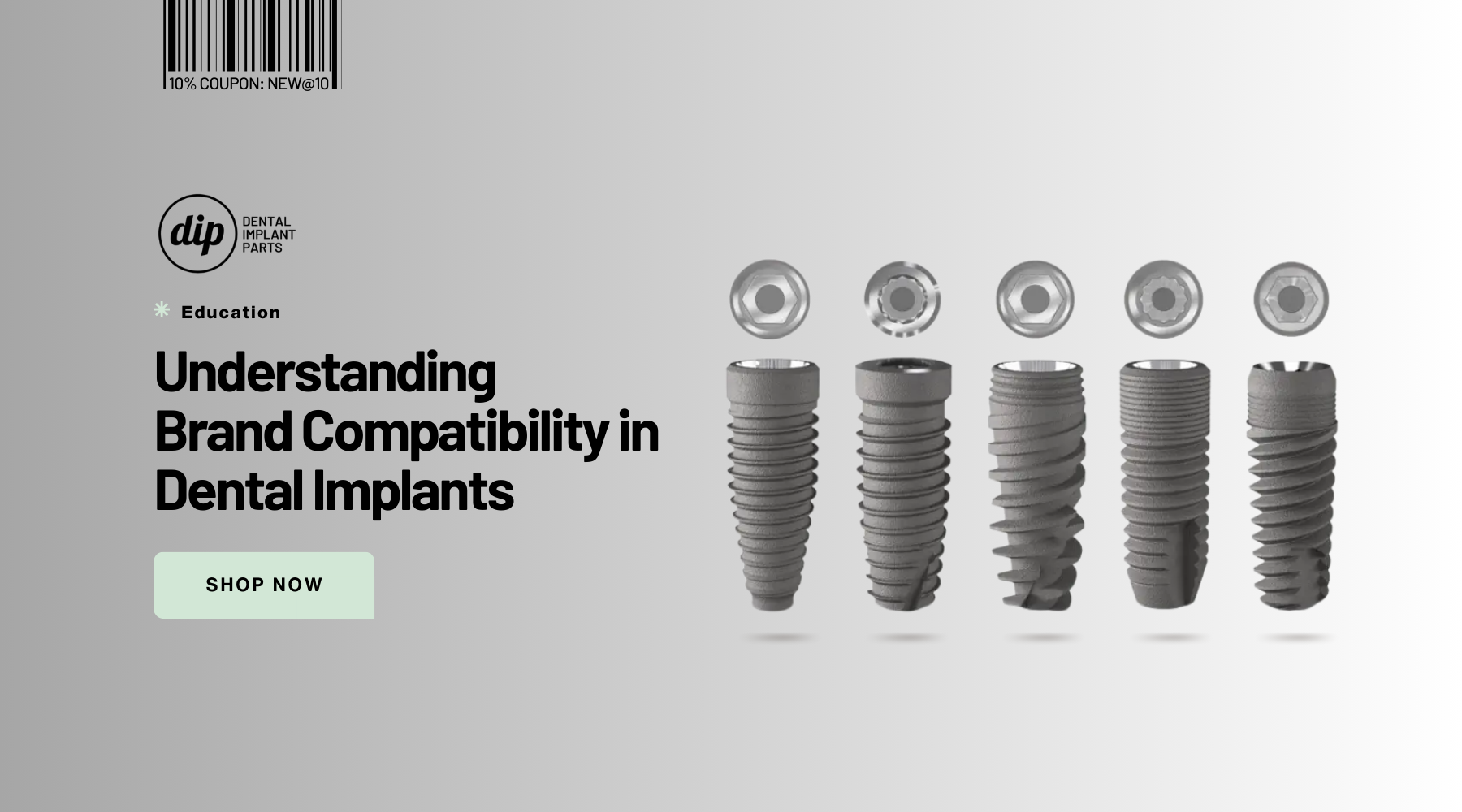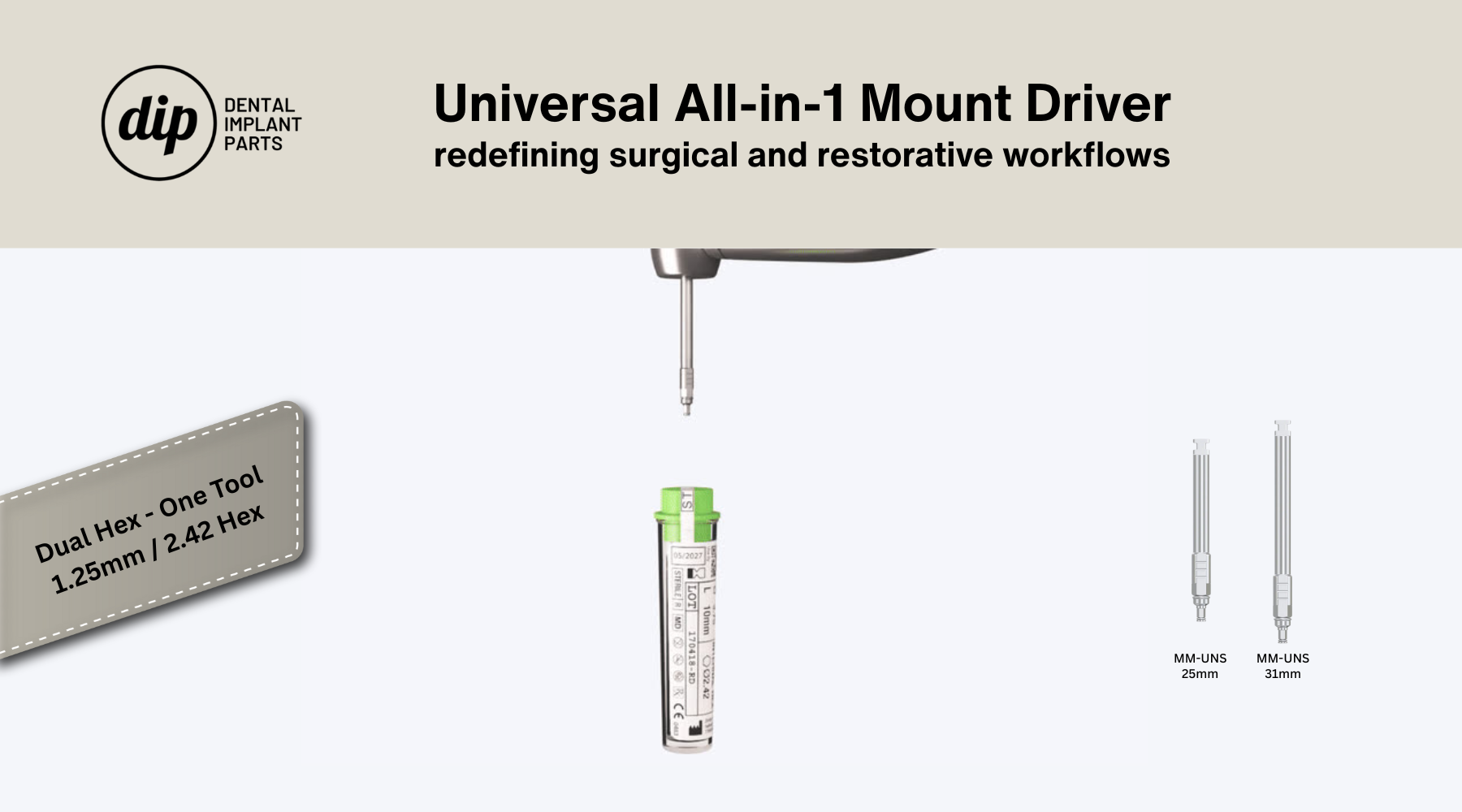The realm of implant dentistry is constantly evolving, demanding materials that offer both exceptional aesthetics and unwavering strength. Zirconia abutments have emerged as a compelling option, captivating dental professionals with their unique blend of beauty and functionality. This blog post delves into the world of zirconia abutments, exploring their properties, benefits, considerations for use, and how they can elevate your implant treatment strategies.
Beyond Strength: Unveiling the Allure of Zirconia
Zirconia, also known as zirconium dioxide (ZrO2), is a biocompatible ceramic material renowned for its exceptional strength, biocompatibility, and remarkable aesthetic properties. These very characteristics make it a compelling choice for various dental applications, with zirconia abutments playing a pivotal role in implant dentistry.
Key Properties of Zirconia:
- Strength: Zirconia boasts exceptional strength, comparable to natural tooth enamel. This translates to a highly durable abutment material capable of withstanding the forces of biting and chewing.
- Biocompatibility: Zirconia exhibits excellent biocompatibility, minimizing the risk of allergic reactions or peri-implant inflammation in the surrounding tissues.
- Aesthetics: Unlike traditional titanium abutments, zirconia offers a natural, tooth-like color that seamlessly blends with the surrounding dentition. This is particularly advantageous in the anterior region, where aesthetics are paramount.
- Radiolucency: Zirconia exhibits slight radiolucency on X-rays, allowing for easier monitoring of the bone-implant interface.
Unveiling the Advantages of Zirconia Abutments
The unique properties of zirconia translate into several benefits for both dental professionals and their patients:
- Enhanced Aesthetics: The natural, tooth-like appearance of zirconia abutments significantly improves the aesthetics of implant restorations. This is particularly beneficial for implant-supported crowns in the anterior region, where a metallic abutment would be highly visible and detract from the overall aesthetics.
- Improved Soft Tissue Management: The smooth surface of zirconia abutments promotes optimal soft tissue health around the implant. This can lead to a more natural-looking emergence profile and potentially reduce the risk of peri-implant mucositis.
- Reduced Allergic Reactions: Zirconia is a biocompatible material, making it a suitable option for patients with potential metal allergies.
- Enhanced Patient Satisfaction: The combination of improved aesthetics, better soft tissue integration, and reduced risk of allergic reactions can significantly contribute to enhanced patient satisfaction with implant restorations.
Considerations for Utilizing Zirconia Abutments
While zirconia abutments offer numerous advantages, it's crucial to understand their limitations and appropriate situations for use:
- Strength Considerations: Although strong, zirconia may not be the ideal choice for all clinical scenarios. In cases with excessive occlusal forces (e.g., bruxism), a titanium abutment might offer superior long-term strength.
- Fracture Risk: While uncommon, zirconia abutments can fracture under extreme pressure. Careful case selection and proper use are essential to minimize this risk.
- Cementation: Zirconia requires specialized luting agents for secure cementation to the implant. Understanding the appropriate cementation protocols is crucial for long-term success.
- Cost: Zirconia abutments might be slightly more expensive than traditional titanium abutments. However, the potential benefits of improved aesthetics and patient satisfaction can be weighed against the cost.
Integrating Zirconia Abutments into Your Implant Workflow
Here's a breakdown of how you can integrate zirconia abutments into your implant workflow:
- Treatment Planning and Implant Placement: Plan the implant placement considering factors like bone quality, desired restoration type, and aesthetics. Proceed with implant placement surgery according to the chosen implant system's guidelines.
- Abutment Selection: Once the implant has osseointegrated, select a zirconia abutment compatible with the implant system and offering the desired platform size and angulation. Some manufacturers offer pre-colored zirconia abutments for enhanced aesthetics.
- Impression or Intraoral Scan: Depending on your preferred workflow, capture the definitive implant position using a conventional impression or intraoral scanning technology.
- Digital Integration: Import the digital impression or scan data into your dental design software. Ensure the software recognizes the zirconia abutment for accurate digital representation.
- Restoration Design: Design the final restoration (crown, bridge pontic, etc.) considering factors like occlusion, material (e.g., zirconia crown), and desired emergence profile.
- Fabrication and Delivery: The designed restoration can be fabricated in a dental lab or milled chairside using specialized zirconia milling units. Once ready, the restoration is securely cemented to the zirconia abutment.




